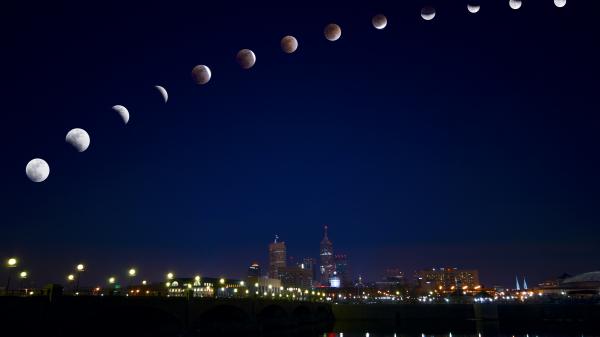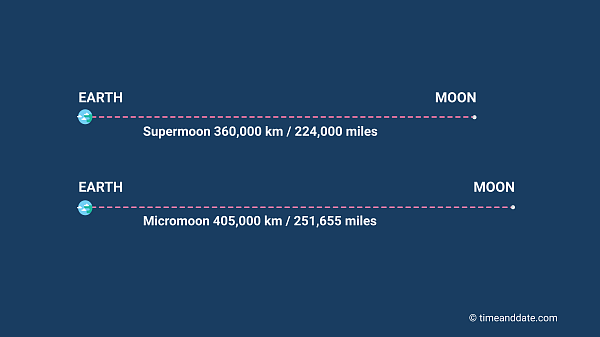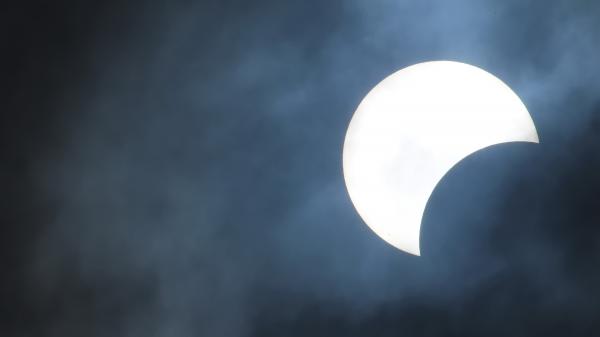On the night of January 20 and early morning of January 21, 2019, depending on your time zone, the Moon will be totally eclipsed for over 60 minutes. Here are some things you should know about this total lunar eclipse.

Different stages of a total lunar eclipse.
©bigstockphoto.com/alexeys
Taking pictures? Share them with us!
1. First Lunar Eclipse of 2019
This will be the first and only total lunar eclipse of 2019. The only other lunar eclipse during the year, a partial lunar eclipse, takes place on July 16/17, 2019.
2019 has five eclipses. The year begins with a partial solar eclipse and ends with an annular solar eclipse, with a total lunar eclipse, a total solar eclipse, and a partial lunar eclipse in between.
Animation: What the January 20/21 eclipse will look like
2. But Last Total Eclipse of the Moon...
...until 2021. The next time residents of Earth will be able to see a Moon completely covered by the Earth's shadow will be on May 26, 2021.
The January 20/21, 2019 total lunar eclipse is the 18th total lunar eclipse since 2001, the beginning of this century, which will see 85 total lunar eclipses.
Animation: Next eclipse in your city
3. The Eclipse Will Last For 5 Long Hours...
...from start to finish. The Moon will be completely covered by the Earth's umbra for over 60 minutes. The entire eclipse, including the penumbral and partial phases, will take 5 hours and 12 minutes.
4. It's A Super Wolf Blood Moon


A Supermoon takes place when the Moon is at its perigee.
timeanddate.com
At 05:16 UTC on January 21, 2019, the Full Moon will reach its perigee—the point on its orbit closest to the Earth. Known as a Super Moon, Supermoon, or Super Full Moon, this Full Moon may look bigger and brighter than a normal Full Moon.
The eclipsed Full Moon is also known as the Wolf Moon in many Northern Hemisphere cultures, after howling wolves that can be heard during this time of the year. The year's first Full Moon is also known as Old Moon, Ice Moon, Snow Moon, and Moon after Yule.
The confluence of these two events at the same time as the lunar eclipse has prompted many people to name this rare eclipse, the Super Wolf Blood Moon or the Super Blood Wolf Moon. The Blood Moon part of the name comes from the fact that the Moon may turn a shade of red during totality.
5. Early Morning, Late Night Eclipse
The eclipse will be visible in its entirety from North and South America, where it will be the evening of January 20, 2019, when the Earth's shadow begins creeping over the Moon's surface. For residents of eastern North and South America, the eclipse will end well after midnight on January 21, 2019, while for those living in the western parts of the two continents, the eclipse will end before midnight.
January 21, 2019 is Martin Luther King Day, which is a federal holiday in the United States. If you are in the U.S. you'll be able to stay up later on January 20 to view what promises to be a spectacular celestial event. Weather permitting of course.
People in Western Europe, including those in the United Kingdom, Norway, Spain, Portugal, and France will be able to see the entire eclipse, with totality taking place early in the morning of January 21, 2019.
The rest of Europe's population will be able to see the total phase of the eclipse in the morning of January 21, right before the Moon sets.
Sunrise and sunset in your city
In Western Africa, only those in Mauritania and some parts of Western Sahara will be treated to the entire eclipse, from start to finish, during the early hours of January 21.
When does the eclipse begin in your city?
6. No Need for Eye Protection
Total eclipses of the Moon are spectacular events and are easy to see with the naked eye. Unlike solar eclipses, which require protective eyewear, a lunar eclipse can be viewed without specialized eye protection. Just step outside, look up, and enjoy!

A partial solar eclipse looks like the Moon has taken a bite of the Sun.
©bigstockphoto.com/underworld1
7. Preceded by a Solar Eclipse
Solar and lunar eclipses tend to follow each other. The January 20/21, 2019 total lunar eclipse will follow a partial solar eclipse on January 5/6, 2019.
Almost six months later, on July 2, 2019, a total solar eclipse, visible from parts of Chile and Argentina in south America will take place.
8. It Is Part of Lunar Saros Series 134
In astronomy, each lunar eclipse is assigned a Saros cycle. Lasting about 18 years or 223 synodic or lunar months, Saros cycles are defined by the recurring positions of the Sun, the Earth, and the Moon over that period. For that reason, lunar eclipses separated by a full Saros cycle have similar features, including the time of the year and the distance of the Moon from the Earth. These similar eclipses make up a Saros series.
The January 20/21 total lunar eclipse is part of the Saros series 134. The series has 72 eclipses, 26 of which are total lunar eclipses. It began with a penumbral lunar eclipses on April 1, 1550 and will end with another penumbral eclipse on May 28, 2830.